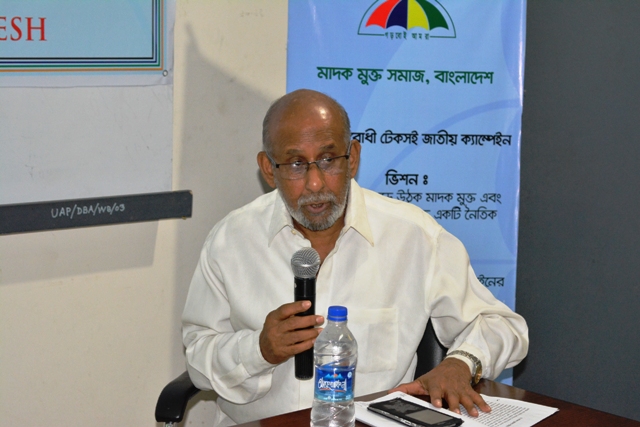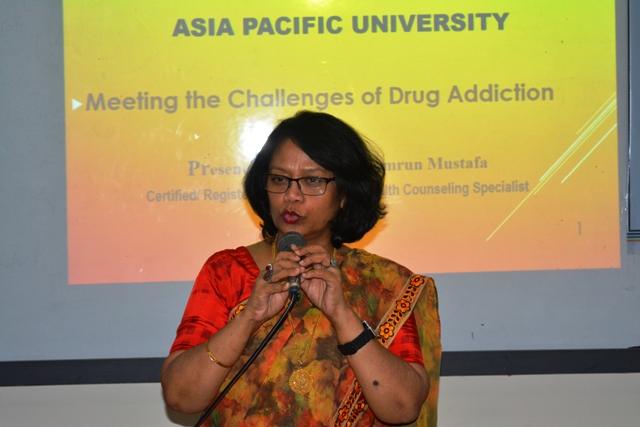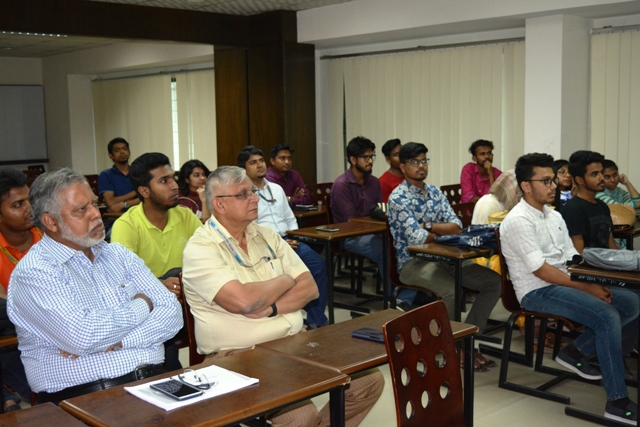UAP organized a seminar on ‘Meeting the Challenges of Drug Addiction’
The Social Counseling Centre of University of Asia Pacific organized a seminar on ‘Meeting the Challenges of Drug Addiction’ on 25th April, 2019 at the seminar room of Department of Business Administration, UAP.
The Seminar was chaired by Air Cdre Ishfaq Ilahi Choudhury (Retd.), Director, DSW, UAP. The key speaker of the seminar was Prof. Dr. Kamrun Mustafa, Certified Drugs & Mental Health Counseling Specialist who is also a member of American Public Health Association. The program was collaborated by an organization named ‘Madok Mukto Somaj, Bangladesh (MMSB)’. This organization has been working in Bangladesh to eradicate the uses of substances. At the beginning of the seminar Major General AMSA Amin (Retd), Chairperson of ‘Madok Mukto Somaj, Bangladesh’ introduced the activity of their organization and how they are helping especially the university students to come out of drugs. He also discussed the strategic plans of their organization to reach their mission and vision.
The key speaker of this seminar then presented her speech. She started with the definition of drugs, types of drugs and the different terminologies that youth uses for different drugs. She also differentiated between the criteria of an addicted abuser and an occasional drug abuser. In her lecture she highlighted the impact of four most commonly used drugs among the youth, mixture of methamphetamine and caffeine (yaba), chlorphenamine and codeine (phensedyl), cannabis and alcohol. She illustrated the impacts of those drugs in our body from her professional experiences of treating addiction disorder and with a lots of visual materials. She also mentioned about cigarette which she considered as the gateway to any sort of drugs. She concluded her lecture by explaining how the youth, mostly out of curiosity and at times just to feel happy or to avoid psychological discomfort, getting involved with drugs keeping themselves unaware about the bio-psycho-social hazard.
The lecture and visual materials were designed in a way that from the very beginning the session was much interactive and the students felt comfortable enough to open themselves up with their concerns and queries. The seminar was concluded by a question answer session and with a vote of thanks from the chairperson.



